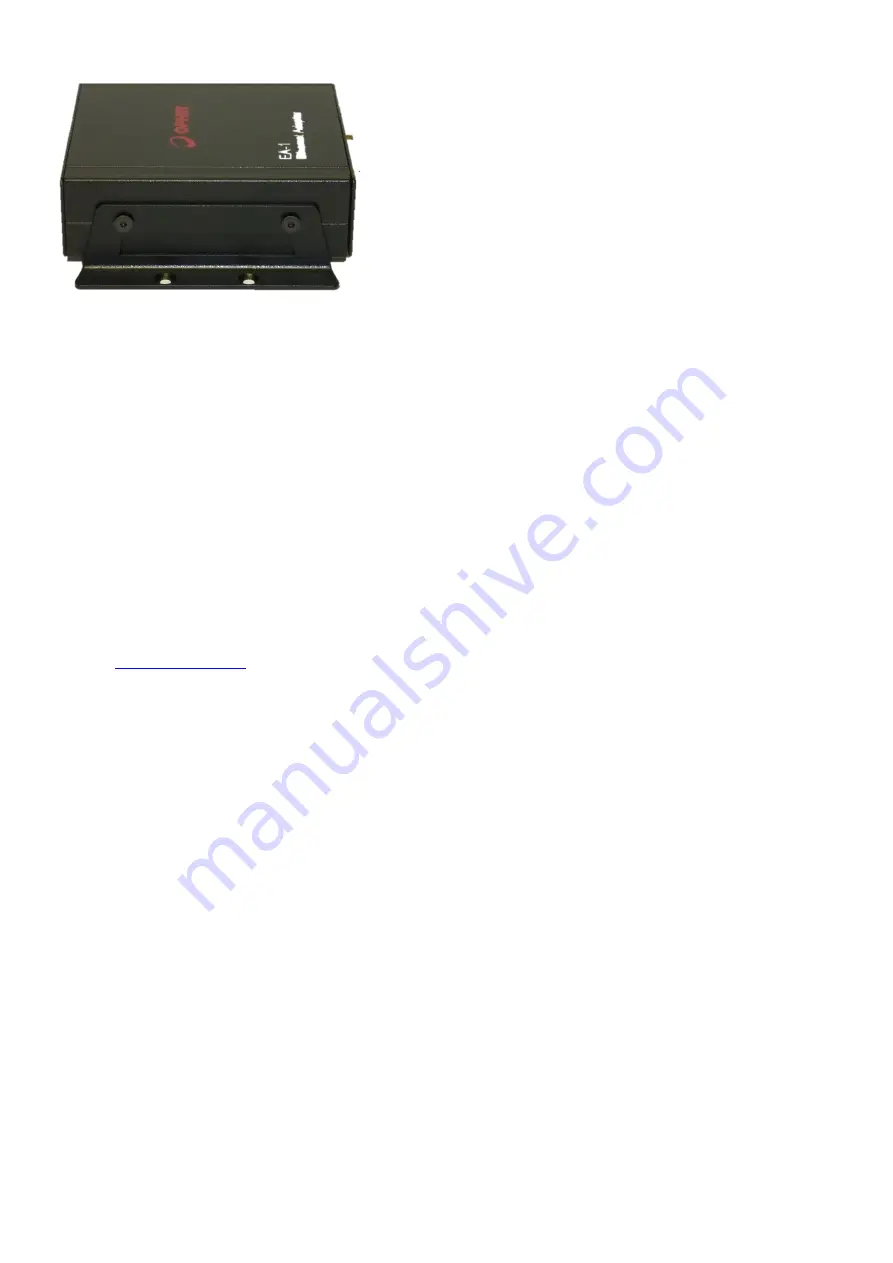
6
On the sides:
Two M3 mounting holes are provided along each side of the device allowing attachment of an optional
bracket (as shown in the illustration above). The bracket makes it easier for the customer to attach the
device into his mechanical system. A set of two brackets and four screws are supplied with the device.
Full device specifications are included in Appendix A below.
Package Contents:
The EA-1 package includes the following items:
EA-1 adapter
Ethernet cross cable (for initial configuration)
USB-A to USB-Mini-B cable (for initial configuration)
Ophir 12v DC power supply
2x mounting brackets, 4x M3 screws for attaching the brackets to the device, 1x Allen Key
The
“OphirEthernetApp”
PC application and drivers for using the USB Virtual COM Port are available on the Ophir
website,
, search for “EA-1” and “Software”.
The device can be powered either via ‘Power over Ethernet’ (PoE) if available, or via the 12-24v DC input.
Connection Protocols:
There are four ways to connect to the device:
Telnet
HTTP
UDP
USB Virtual COM Port
Telnet:
A Telnet connection can be used to send commands and receive back replies from the device. The connection is
established by using the device’s IP address. The host device (for example, a PC) is the “client” and the EA-1 device is
the “server”. This type of connection can be used manually from a Telnet terminal, or can be programmed into the
user’s software application to add automation, in much the same way as using a COM port. This type of connection
protocol is used in the
“OphirEthernetApp”
PC application to control the device. Details are listed later on in this
document.
HTTP:
Using a web browser, a connection can be established to the device which allows basic configuration, sending
commands, monitoring power from the sensor, and viewing general information about the device. The user needs to
enter the IP address in the browser and a connection is made to the device. A top level “web-page” is displayed with





















